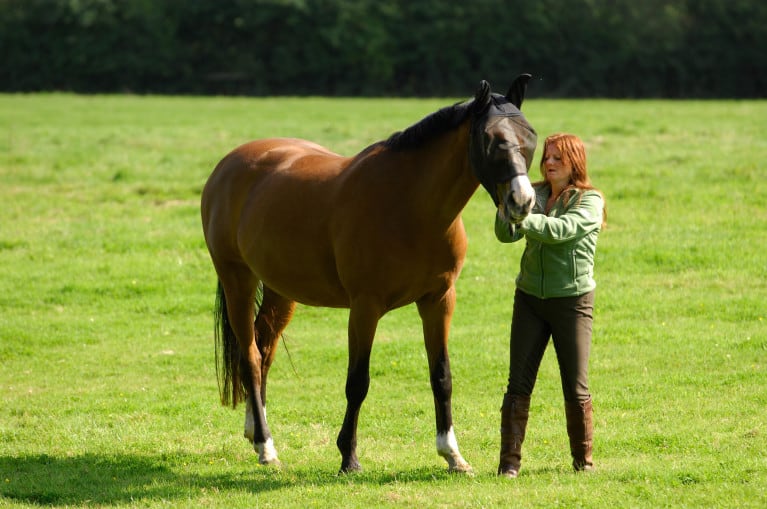
Warm weather means that flies and midges are never too far behind. Horses are in the greatest danger of being bitten when they’re out in the field, so it’s crucial that you arm them with the right protection.
If flies particularly bother your horse then the irritation can cause him to act out of character and behave badly, driving both him and you to distraction.

There are plenty of fly repellent products on the market that can help your horse remain bite free. Most commonly sold in sprays, wipes, gels, roll-ons, creams and liquids, many fly repellents are quick and easy to administer. Some effective ingredients for repelling pesky flies include:
- Citronella Oil – a natural insect repellent obtained from the stem and leaf of lemongrass, citronella oil is very effective against mosquitoes.
- DEET – used to confuse insects by interfering with their odour receptors, DEET is widely accepted as one of the most effective products on the market.
There are also a number of natural fly repellents available if you’re looking for an organic approach, such as herbal oils, vitamin B12 and garlic.
Different fly bites require different protection. Some of the most common bites include:
Midges
Different species of midges feed on different areas of the horse, but the general signs of a midge bite is that your horse’s mane and tail hairs are broken or rubbed away, and if your horse is prone to allergic reactions from bites then they could exhibit signs of sweet itch. In dealing with midges permethrin based products are the best way to go, as well as using oil based products to prevent them landing, but these oil products have to be applied several times throughout the day to be effective.
Black Flies
Your horse is most at risk of black flies during the spring and early-summer months around dawn and dusk. Feeding around the face, neck and underside, these fly’s bites form painful lumps that have pinprick areas of bleeding and crusting. Physical barriers are the most effective, as well as oil based products (e.g. oil of citronella).
Horse Flies
Mainly a problem in June and July, horse flies usually accumulate around the horse’s underside, legs, neck and withers. Bites appear as pimples and small lumps, and can be avoided through the use of insecticides (especially permethrin or cypermethrin) that can be bought from tack shops.
Stable Flies
A stable fly’s bite appears as an itchy or painful wheal or papule that has a central crust, targeting the legs and abdomen.

Other tips to help stop your horse from being bitten include investing in a suitable fly rug, and keeping your horse stabled from 16:00 to 8:00, to help him avoid the worst of the midges. Also, to help protect your horse in his stable, consider covering stable doorways and windows with nets or fine mesh, and when placing your horse out to graze check that you’ve chosen a field that isn’t near a pond or lake since these are areas that flies and midges are likely to group.









